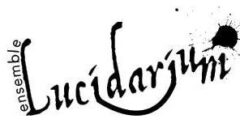The Babel project
The Babel project
This project is part of “Ars Hebraicae”, Lucidarium’s series dedicated to the re-composition of the music of the Jews in Renaissance Europe, a project that has brought us throughout Europe and North America, and into contact with audiences and artists from all walks of life.
It is a project where there is no attempt at trying to reproduce old sounds. Rather, the old and not so old material – essentially texts and melodies – are used as a springboard for new creations, combined with new sounds and instruments.
The project is our own, creative continuation of the almost incredible cross-‐ contamination that has gone on and is still going over temporal, geographical, cultural and class borders. In the same way, composition, improvisation and older material are combined in a concept designed to defy definitions.
Sources of Inspiration
The tunes and lyrics we have used as our inspiration rarely come from the courtly “Art Music” world. Not compositions designed to dazzle with their beauty and sophistication but functional pieces: music designed to heighten worship, bring out the most of a text, or to encourage wedding guests to get up and dance.
Indeed, the “historical” musical sources (including Moishe Beregovski’s transcription of Jewish Ukrainian song, in its own way just as difficult to decipher as any Renaissance manuscript) we have based our compositions and improvisations on are, in general, minor ones. For example, sketchbooks used by amateur musicians (the Hainhofer Lautenbuch), “fake books” used by professional ones (Giovanni Lorenzo Baldano’s Libro per scriver l’intavolatura per sonare sopra le sordelline), or a collection for localized parochial use (Il Laudario di Chiavenna). Most songs are from the chansonniers, Liederbuchs, and such, where singers would write down the lyrics, without any musical notation, to help them remember the songs, because very few people knew how to read or write music, but everyone knew hundreds, if not thousands of tunes by heart. Next to these written sources, we have been inspired by music from the Jewish, Eastern European and Italian traditions, especially the sources where, in some kind of fortuitous accident, archaic traits -‐ words, melodies and dances – have been preserved, through the ages, and against all odds.
The program has been performed at Yiddish Summer Weimar, the Speyer music festival, Klezkanada, at the Jalopy theater and a few other places. The size of the ensemble starts at three and can go up from there…. the more the merrier….
The repertoire ranges from medieval dances to 21st century neo-Yiddish compositions. Collaborators from across Europe and the United States include Sasha Lurje (voice), Eléonore Weill (voice, multi-instrumentalist), Ilya Shneeweys (multi-instrumentalist), Craig Judelman (fiddle), Thabet Azzawi (percussion), Sanne Möricke (accordion), Sarah Myerson (voice, percussion), Cookie Segelstein (violin), Stuart Brotman (bass), and Josh Horowitz (hammer dulcimer, accordion),
Élodie Poirier – nyckelharpa, viola da gamba
Fabio Accurso – lute
Massimiliano Dragoni – percussion, hammer dulcimer.
Listen to our program on Soundcloud

